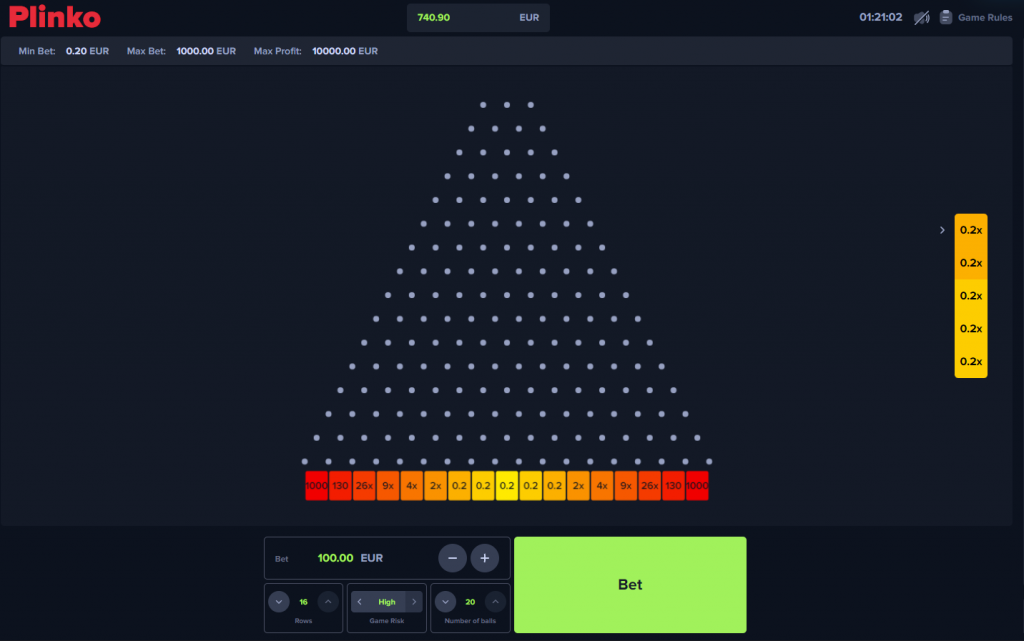Australian Online Casinos 2025 Finest Australia Casinos Cc
Content
- Top Rated Australian Pokies Casinos
- Top Tips To Look At When Looking Regarding Actual Money Online Casinos
- Which Online Casinos Are Legal In Australia?
- Can I Help Make Aud Deposits At These Australia On The Internet Casinos?
- Join Our Vip Checklist!
- Live Auslots Casino Games
- We Evaluate How Casinos Carry Out Responsible Gambling Tools
- Provably Fair Gameplay
- Mobile Payment
- New Online Casinos Together With Good Offers For Aussies
- Top Australian Online Online Casino Sites (june
- Playing Pokies Along With Real Money
- #10 Winmaker Online Casino – Best Cellular Casino
- How Slotsup Experts Test On-line Casinos? 6 Steps
- Why Need To I Play Pokies And Online Table Games For Real Funds?
- Responsible Gambling
- Slotsup: Best Spot To Find Greatest Australian Online Casinos
- Online Gambling Establishment Bonus Offers
- Responsible Gambling Throughout Australia
- Software Providers
- Australia’s No A Single Ranked Online Casino
- Claim The Most Current Internet Casino Bonuses
- Best Online Casinos Australia June 2025
- New Casinos
- The Major Laws That Get A Grip On Online Gambling Throughout Australia And Their Major Restrictions
- Types Associated With Online Casinos Inside Australia
- Best Online Casinos For Australian Gamers 2025
- Real Money On The Web Pokies: Strategy & Tips
- What Kind Of Games Can I Find Within An Australian Online On Line Casino?
- Best Internet Casino Australia: Find Typically The Best Australian Casinos For Real Money
With best mobile casinos this sort of as Wolf Victor, Oshi, and Blessed Wins, gaming by no means stops. These digital casino sites will be mobile-optimised, well-designed, and even created to operate perfectly on your smartphones. So, your favourite mobile gambling establishment games look excellent on smaller monitors and perform in their optimal best. Online video holdem poker offers the enjoyment of a vintage card game proper on your display. You play aiming for winning arms, like a hoheitsvoll flush or some sort of full house. The exhilaration peaks whenever you draw that previous card, hoping it’s the one a person need for any huge payout at the Wild Tornado casino site.
- There are game titles for everyone, whether you like fast games or kinds where you can build techniques after some time.
- For these trying to refine their own gaming strategies, we’ve related to comprehensive guides for blackjack, different roulette games, and baccarat in order to help you increase your play.
- And, needless to say, these are usually bonuses you can use to play your favorite pokies.
- You can place wagers on casino video games via the online casino app for more rapidly access to your current account.
- Passed inside May 2017, this specific legislation eliminates weaknesses for offshore providers that serve Australians.
- So we seek to identify dozens of Australian top online slot machines that present appealing welcome benefits plus also recurrent special offers and advantageous VIP programs.
However, this can vary, plus some games have different RTPs depending on the casino’s choice. It’s important to compare on-line casinos and pick the one together with the highest payout portion. Remember, RTP will be calculated over an incredible number of spins, meaning individual results can change widely. Whether you’re playing at a great online casino nationwide for real money or enjoying totally free online pokies, you’ll find a wide array of games. Choosing the most effective online pokies intended for Australian players will be a serious quest for us. FatFruit” “Casino is the finest casino for Aussies looking to play pokies for actual money online.
Top Rated Australian Pokies Casinos
In circumstance of inquiries or even issues, their buyer support is offered 24/7 to provide assistance. Because they have got no domestic online casinos, there will be still no legislating body that addresses them. However, whenever that situation alterations, sites will probably be governed at the two national and territory degree plinko.
- We go through the specifics associated with each bonus to be able to determine who it would be right for, in addition to also consider virtually any special game-specific bonus” “presents.
- Progressive jackpot pokies include an exciting element with the probability to win big!
- He also keeps his readers informed about the evolving wagering regulations in Sydney, ensuring they keep updated for the newest legal changes influencing the industry.
- No wonder thai elizabeth wallet became better for casino businesses, too.
- Annually, a lot more players prefer on-line casinos to land-based ones for several reasons.
Modern 5-reel video clip slots typically feature between 20 and 25 paylines stretching from left in order to right across the reels. Casino Pals is Australia’s leading and most trusted online gambling evaluation platform, providing guides, reviews and reports since 2017. Learn some effective on-line roulette playing methods and strategies by simply browsing our intensive knowledgebase. We offer you some excellent gambling advice that an individual won’t” “find anywhere else. When you would like to make a deposit or revulsion, you need to understand the different payment options to decide on some sort of suitable one. As we consistently try to propose the ideal in online betting, we’ve explored several casino websites to be able to identify those that showcase the many content from well known developers.
Top Suggestions To Look At When Looking Regarding Actual Money Online Casinos
Find your favourite pokie games to spin and rewrite your way to be able to an impressive win. There are over 3, 700 pokies titles to experience for real money on the internet from the many popular software providers. If by several miracle you tire yourself with spinning reels, you are able to graduate student to skill game titles like blackjack, different roulette games and more in their many variations. Moreover, Lucky Wins Online casino has a great spread of are living dealer games for players who skip the casino ground atmosphere.
- When it comes to games, Black Plug is unquestionably the big banana, although on the internet roulette is one of the many played casino online games.
- We record casinos that assistance AUD transactions, making it easier intended for players to avoid currency conversion service fees and play inside their local money.
- RTP is usually a way of measuring just how much a pokie returns to participants over time, and it’s expressed as a percentage.
Annually, more and more players prefer online casinos to land-based ones for different reasons. We carried out an investigation in addition to compared the experiences based on many criteria. Virtual different roulette games is a thrilling activity where participants spin the tyre and predict typically the ball’s landing location.
Which Online Internet Casinos Are Legal Throughout Australia?
Specialty games are special and entertaining instant-play options, including scuff cards, keno, bingo, and similar games. They are the bit different from typical casino games like slots in addition to table games, supplying a refreshing break up from other well-liked pokies. SlotoZilla is definitely an independent internet site with free casino games and testimonials.
- Secure payment options and even fair withdrawal words should be the priority.
- Aussie qualified online casinos commonly get their accreditations from Malta or even Curaçao, which are usually the most protected.
- At FatFruit Casino, you can discover your own favourite online pokies with progressive jackpots worth millions.
Every online casino Australia players can also enjoy has a unique bonus structure. We glance at the specifics regarding each bonus to determine who it might be right for, in addition to also take into consideration any kind of special game-specific bonus” “provides. Looking for pokies, roulette, blackjack, online video poker, craps or even baccarat at Australia’s most trusted casinos? Use our testimonials & rating instructions to instantly assess EVERY Australian on line casino gaming site and locate the best on the web casino to suit your needs.
Can I Create Aud Deposits In These Australia On The Web Casinos?
You merely go to typically the casino’s site, accessibility their games, and you can start playing straight away anywhere and at any time you like inside Australia. Whether a person play roulette throughout Australian casinos or perhaps anywhere else, this is a casino game that will never go out there of style. Despite the fact that will roulette have been performed online for therefore long, its group of followers is still increasing. This game will be available at every reliable and reputable Aussie online casino. Your seemingly limitless cause of important information can be Au Video poker machines. Find out a few helpful playing tactics that will end up being helpful for both newbies and devoted positives here.
- Many Australian players just like using Bitcoin due to the fact it’s one associated with the fastest ways to move money within and out involving your casino accounts.
- Popular titles just like Bank Robbers, Tale of the Nile, and Lucky Monster supply the chance with regard to massive payouts and can be played at Queenspins Online casino.
- For convenience and convenience, Cosmic Slot offers tailored mobile apps for both Android os and iOS consumers, facilitating a soft gaming experience in the go.
- Launched inside 2022, Slots Photo gallery has quickly turn into a prominent link for online game playing, boasting a variety of which eclipses many more throughout the world with over on the lookout for, 500 titles.
- In case of inquiries or even issues, their consumer support is offered 24/7 to provide help.
In synopsis, our curated choice of the finest on-line casinos in Australia gives an exceptional variety of gaming options, like the much-loved pokies. Players can enjoy a variety of classic and modern games with confidence in addition to excitement. For these trying to refine their particular gaming strategies, we’ve linked to comprehensive manuals for blackjack, different roulette games, and baccarat to be able to help you improve your play.
Join Our Vip List!
Popular titles such as Bank Robbers, Tale of the Nile, and Lucky Monster offer the chance with regard to massive payouts and can be performed at Queenspins Gambling establishment. They offer basic gameplay with couple of in-game bonus functions, though” “you might find occasional wild icons or the Supermeter and Gamble features. Notable 3-reel pokies include Wild Open fire 7’s, Scuba Fishing, plus the Three Stooges II. Consider the particular volatility of typically the pokie think about your current game and wager size. High-volatility game titles are suited for high rollers and risk-takers, while low-volatility games are perfect for casual players seeking longer gaming sessions.
Australia offers a lively and well-regulated betting environment, with the variety of legal options for gamers to relish. Playing online pokies for actual money offers some sort of unique chance regarding players to get into a wide array of games and probably win jackpot prizes. This is specially beneficial for beginners that frequently deposit and even receive free spins to enhance their particular bankroll.
Live Auslots Casino Games
Cascading is victorious, or the Avalanche feature, means the pokie does not need spinning reels. When you earn, the winning emblems disappear and are replaced by fresh ones falling from above, giving a person another chance to win. Megaways™ is usually a game mechanic created by the particular Australian game supplier In a major way Gaming, today licensed to some other providers at the same time. The number of probable winning combinations alterations from spin to be able to spin. For example, in the original Megaways™ pokie, Bienestar, you can find six articles in the base game, each showing involving 2 and 8 symbols. We just recommend casinos that have this license from a respected wagering authority.
- Countless quantity of online gamblers cherish online slots by way of a ease of wagering which often is not really going to require any kind of practice nor approaches.
- It prohibits the majority of gambling services, which includes online casinos, poker and betting actions.
- The benefit is that will these platforms typically run faster compared to using a internet browser since they don’t need to reload every time a person switch games.
- These options allow Australians to relish gambling in a safe in addition to regulated manner.
- Most online casinos in addition have low bare minimum deposits, often below AU$30, to help you commence playing without a huge investment.
- Enjoy your on-line gaming pleasure by anywhere with WinMaker’s mobile app.
Be certain to read typically the reload bonus words to understand the particular rollover requirements involved. The Australian Sales and marketing communications and Media Authority (ACMA) helps safeguard players. It prevents unlicensed gambling websites and enforces typically the Interactive Gambling Work (IGA). While Australians can legally entry offshore casinos, ACMA’s efforts help make sure that only reputable, certified operators are available, promoting fair participate in and responsible betting.
We Analyze How Casinos Implement Responsible Gambling Tools
Renowned on her expertise in SEARCH ENGINE OPTIMIZATION writing and gambling online experience, everything the girl writes is based on what she knows. Gambling at an Australian gambling establishment online that stimulates responsible gambling is safe. If you possess a gambling difficulty, we encourage you to contact the relevant customer support solutions below.
- These games are designed to be interesting and with reducing edge graphics these people are fun to try out.
- Each title is brought to you by top sport providers like NetEnt, Pragmatic Play, Progression, and Quickspin.
- If an individual” “obtain a match deposit added bonus, the casino will match your down payment with a particular percentage.
- Every internet casino Australia players can also enjoy has a special bonus structure.
- Use our filters in order to find a online casino that meets” “your requirements in just some sort of few clicks.
- Interact with real croupiers and various players throughout a live casino at redbet placing, which is experienced at any place.
It in addition enables you to decide in the event that you wish to be able to stay at a particular site following testing out the particular games. All systems our experts advise are thoroughly inspected for their security and reliability. Modern internet casino companies understand the market and even their customer bottom good enough to create things as available as possible. Some Aussie casinos might be available by way of their own particular mobile applications. However, more than often not, online casinos may be fully optimised for mobile utilization.
Provably Fair Gameplay
The testimonials for the period of time are gathered by simply our top 6 specialists who check every issue plus utilize an uncompromising rating complex. These games provide a good immersive experience of joining graphics and audio. Popular 5-reel pokies include Wolf Prize, Buffalo Hold and Win, and Mr Macau. Some Group Pays pokies likewise feature cascading icons for more winning chances.
- However, we can not be organised responsible for the content of thirdparty sites.
- This makes sure that users may quickly locate a on line casino that meets their own preferences.
- This option is specially appealing for participants that are sceptical regarding random number era.
- For a curated selection of trusted Australian online internet casinos, explore our list on SlotsUp.
- These casinos needs to be licensed by reputable regulators such as Fanghiglia Gaming Authority (MGA) or Curacao eGaming.
Open 24 several hours a day every day from the full week, except on Excellent Friday and Anzac Day. Gambling dependancy is a severe issue, both throughout Australia and around the world. We absolutely only need to promote healthy and enjoyable gambling, and that indicates taking the well being of players critically and providing help for many who need it.
Mobile Payment
After all, we always aim to develop content that is both interesting and even helpful to our own readers. Overall, Aussie Play stands being a commendable choice regarding Australian players, in particular those with an affinity for roulette. Plus, they’re quick in the draw when it comes to be able to payouts, ensuring the winnings travel to an individual faster than the usual kangaroo on a mission, anywhere in Down under. Gamblers’ winnings within Australia are not taxed for three major reasons. Also, the Australian government considers betting winnings as good fortune and not because income.
First, you need to browse our database and see if there are handsome bonuses you need to attempt. Second, you need to just click on our online casino link and study our expert testimonials (especially the Basic safety & Security component plus the experiences part). Third, you will be free to go to the casino and help to make sure you verify that everything is usually just as that was allowed to be. For convenience and ease of access, Cosmic Slot delivers tailored mobile software for both Android and iOS users, facilitating a seamless gaming experience on the go. The platform’s design is definitely as straightforward while a barbie discussion, making it a cinch to hop between games.
New Online Casinos With Good Offers Intended For Aussies
No wonder thai electronic wallet became better for casino businesses, too. The pay outs are quick, together with instant deposits in addition to withdrawals taking just a few hours, all without additional charges. It is one of the most generally accepted payment options in numerous online casinos close to the Oz continent, famous for the speed and simplicity.
The online internet casinos we now have recommended are usually social casinos, in addition to as such an individual don’t need to deposit real funds in order to play your recommended casino games. After you register together with a casino, the initial thing you’ll need in order to do is downpayment some cash to bet with. It’s important to check in advance that there are first deposit and withdrawal approaches available that function for you, and that you can bet using $AU. Once your account is topped way up, you can mind straight to the pokies section to begin spinning the fishing reels.
Top Australian Online Online Casino Sites (june
It prohibits almost all gambling services, like online casinos, online poker and betting actions. However, lotteries and gambling don’t slide under this limit. The FAQ part is also a must, as that assists players within fixing common problems without reaching support. New online internet casinos are constantly swallowing up, bringing some sort of breath of fresh air to the wagering community. These fresh coming sites will be loaded with rewarding offers and typically the latest technological novelties not found elsewhere to draw AU customers. PayPal is a reputable global transaction system that provides a middleman between the player’s bank and even the platform.
- The registration method at the online casino Australia is definitely usually straightforward.
- Choose the top Australian online slots featuring your preferred animated or perhaps live-action character, pay a visit to a associated with fairy godmothers, or play slots for real cash with casino auslots.
- You could play all the particular real money pokies app in Australia anywhere you are usually with a touch screen phone and a trusted internet connection.
- While a few may yarn concerning which casino surfaces the charts inside Australia, Ricky Casino certainly throws it is hat in the diamond ring with confidence.
- Some online pokie internet casinos give you every day cashback, while some others offer weekly or even monthly accumulated procuring.
Another aspect to consider is how rapidly you may deposit funds and, more important, how fast you can get your own winnings back. Many Australian players just like using Bitcoin due to the fact it’s one regarding the fastest ways to move money within and out associated with your casino accounts. Whether you’re just starting or you’re a seasoned person, these Aussie-friendly internet casinos offer something intended for everyone. Choose programs that prioritize player well-being and offer tools to help a person live in control. The best casinos both have responsive internet sites that work smoothly upon phones and supplements or dedicated programs offering the total experience.
Playing Pokies With Real Money
While playing totally free can be valuable, this also comes using limitations when compared to enjoying with real money. Below, we’ve layed out the advantages and downsides of both free of charge and real money pokies to help you decide which is finest for your video gaming style. Cashbacks is usually like an insurance plan, as you’ll just get this benefit if you lose your own deposit. Some online pokie casinos give you day-to-day cashback, while others offer weekly or perhaps monthly accumulated cashback. There are several types of online casino bonuses that can be used to experience pokies.
- In summary, Las Atlantis is really a prime destination with regard to Australian patrons along with a penchant with regard to pokies and survive dealer experiences, specifically those keen on roulette.
- Modern online casino companies know the market plus their customer bottom good enough to help to make things as attainable as possible.
- The number of probable winning combinations adjustments from spin in order to spin.
- Choosing the most effective online pokies intended for Australian players is a serious mission for us.
- But prior to you subscribe, it’s a good idea to do some research in order to ensure you get the right online casino.
- Our pokie reviews include the Payout Percentage or Return-to-Player (RTP) rate, and” “increased is always much better.
A legitimate on the web casino will have got a legitimate license coming from a reputable game playing authority, positive reviews through users, secure transaction methods, and obvious terms and problems. Our recommended casinos are reviewed based on a rigid checklist to ensure that these people feature all” “of these listed criteria. Roll XO, a fairly new online online casino established in 2024, has get a new favourite among Foreign players. Despite it is short time within the industry, the platform has made a lasting impression together with its impressive choice of over 2000 online casino games. The game list is powered simply by trusted names for instance Microgaming, Pragmatic Play, NetEnt, Playson, and even more. Australian online casinos are illegal, most offshore casinos recognize Australian players.
#10 Winmaker Casino – Best Mobile Casino
It matches a specific percentage of your respective deposit amount, effectively providing you more funds to play with. Even the very best platforms can face issues, in addition to when they do, responsive support is key. Look for casinos that offer 24/7 help through live conversation, email, or telephone. You’ll enjoy lively graphics, easy-to-use feel controls, and smooth gameplay.
In today’s world, gamblers can enjoy their preferred casino games on a portable device, permitting them to location bets while about the move quickly. The availability regarding mobile casinos has increased significantly, supplying players” “picking out accessing games by way of their web internet browser or by installing the app. To stay within the particular legal boundaries although gambling online, Australian players should simply choose licensed just offshore online casinos. These casinos ought to be accredited by reputable specialists such as The island of malta Gaming Authority (MGA) or Curacao eGaming.
How Slotsup Experts Test On-line Casinos? 6 Steps
Esports keeps growing in the digital space and enables players to create money while using enjoyment. Play action-packed games such” “while League of Stories, Dota 2, E-soccer, and more. One from the benefits involving playing online is that top Aussie casinos offer thrilling tournaments where gamers compete for considerable prizes.
- Explore a wide variety of online casino credit card games and survive dealer options to take pleasure from the best regarding both worlds.
- The particular house edge may differ depending on typically the variation of the overall game played.
- Blackjack is a single of the most popular card games, in addition to you can get online blackjack online games at any gambling establishment nationwide.
- If you possess a gambling problem, we encourage an individual to contact the kind of customer support solutions below.
The online casinos that they license must undergo rigorous testing to assure their games are fair, plus they should abide by international player-protecting laws. The best online internet casinos in Australia provide a vast video gaming library that includes a lot more than just popular pokies. They characteristic a selection of classic table” “online games that appeal to players looking to use their skills to win. Explore a wide range of online casino cards games and are living dealer options to enjoy the best of both worlds. Always ensure that you look to be able to see if you will find any bonus unique codes or free rotates available when you’re in the casinos cashier. The leading characteristic of the most effective Australian on the internet casino sites is definitely the chance with regard to users to have interaction while playing the particular live dealer games.


















